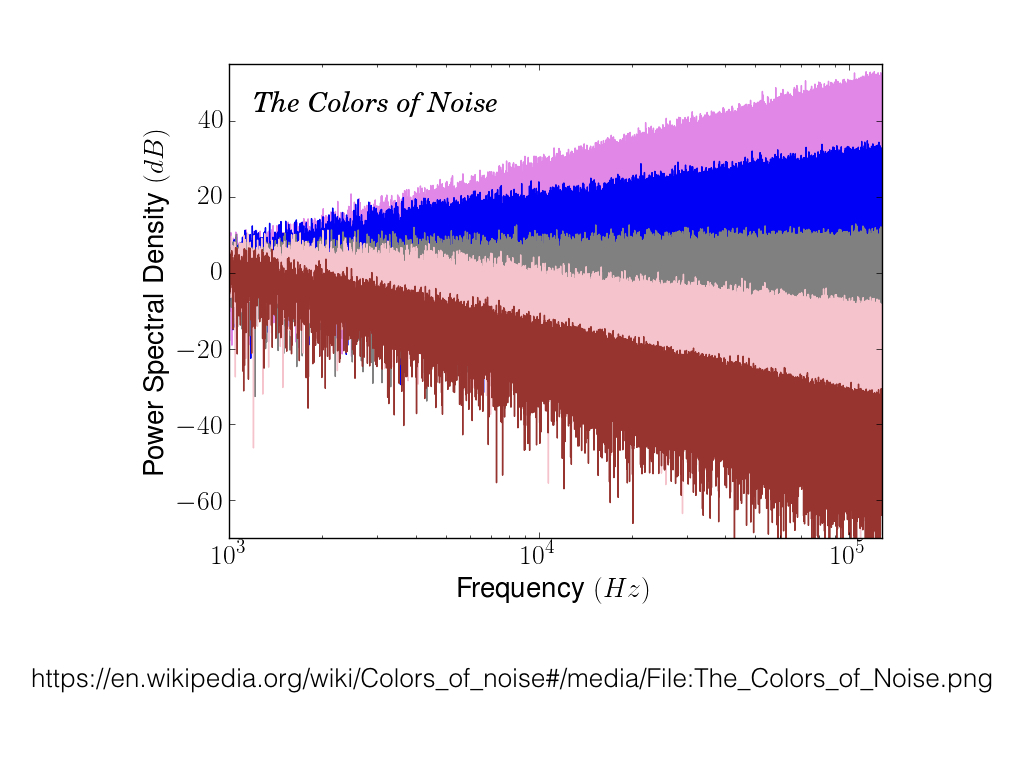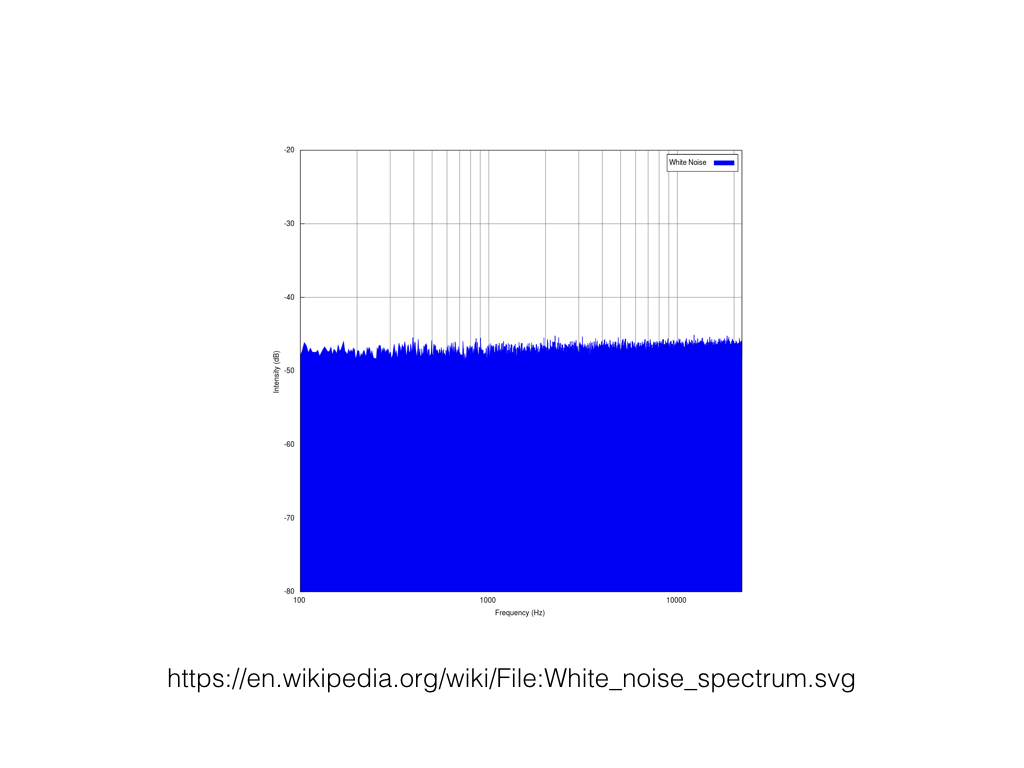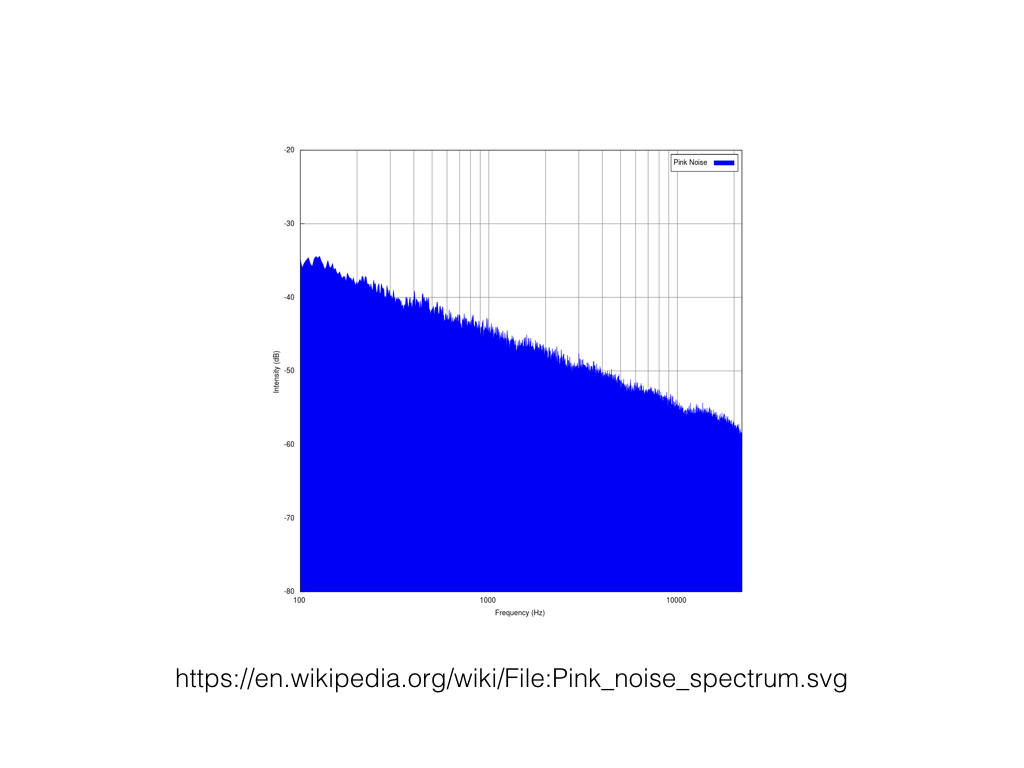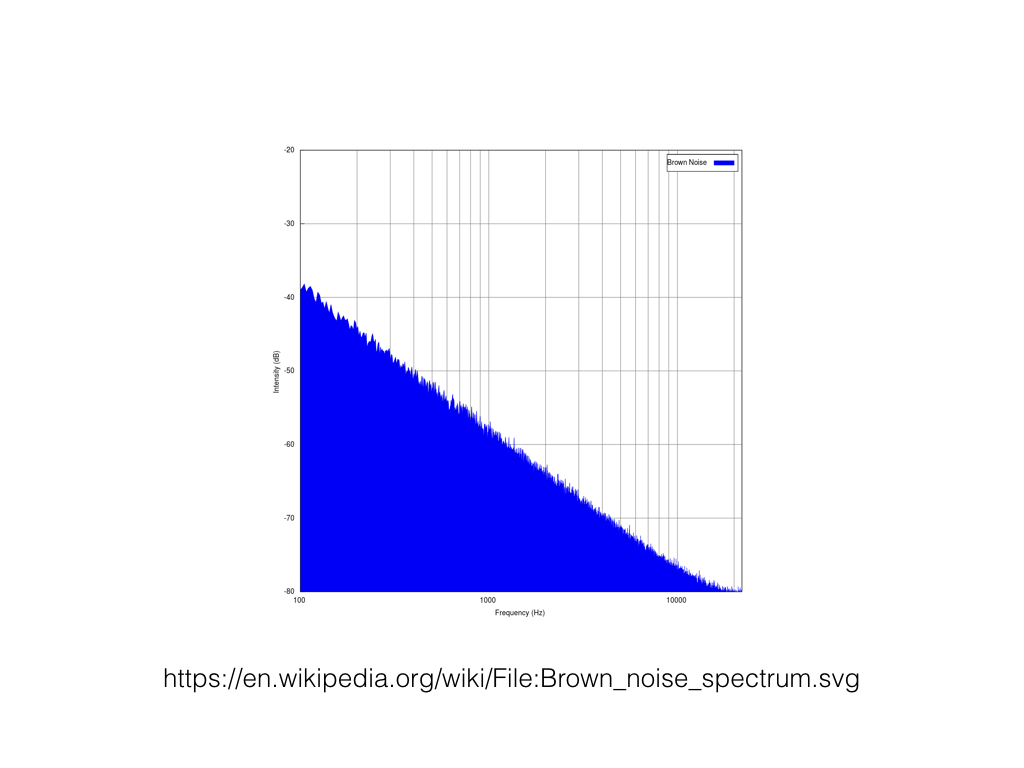Page Card
Noise
Belongs to subject Noise
Noise is a generated random signal. Noise is a collection of signals with random amplitudes and frequencies within specific parameters over time. As our brain has almost nothing to make sense of, we perceive noise different than other sound source. Noise often sounds like percussive instruments. A noise generator is a sound module that creates a noise signal.
The most common types of noise used are white, pink, and brown.

White Noise
White noise is a noise signal where all frequencies have equal amplitude over linear space. For example, 40 Hz to 60 Hz has the same amplitude as 400 Hz to 420 Hz. Recall that humans do not perceive frequencies evenly. Because of this, white noise is harsh to listen to. White noise is commonly used with a filter to shape the color of the sound.

Pink Noise
Pink noise is a noise signal where the amplitudes are equal over logarithmic space. This means 40Hz and 60Hz have the same amplitude as 400 Hz to 600 Hz. This means the amplitude distribution matches the human perception of frequency ranges. As a result, pink noise is smoother than white noise. Pink noise is often used to simulate natural environments and in reverberation engines.

Brown Noise
Brown noise is a noise signal where the amplitudes are equal over 1/frequency^2. This means brown noise has a soft sound, like a gentle blowing wind.

There are many types of noise generators beyond the ones mentioned here. Artists use a variety of noise types to add interest to their work.